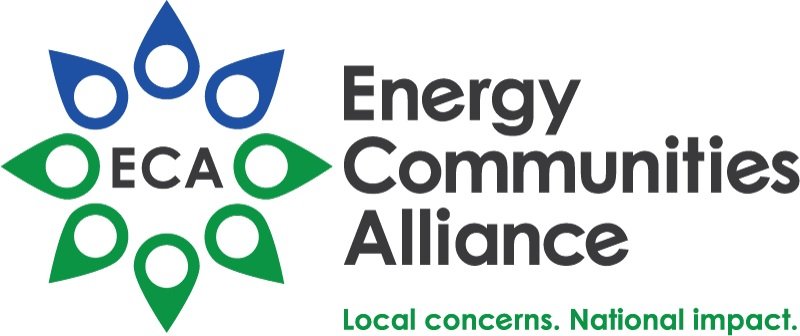NDAA: Will the cleanup budget be cut by 20%? Will the NNSA budget increase by 18%?
Winners and Losers in the National Defense Authorization Act
ECA has put together a list of current winners and losers of the defense authorization budget in the NDAA – primarily DOE-EM and NNSA which together make up the bulk of the House and Senate versions of the FY 2021 National Defense Authorization Act (NDAA). Both bills advanced last week on the Senate floor and in the House Armed Services Committee.
This year the bills authorize another record budget for NNSA (around an 18% increase) and a significant slash for defense environmental cleanup (a potential 20% cut), however new funding was provided for expanded plutonium pit production and new nuclear energy. The President’s budget request proposed to cut EM by 20% and increase NNSA by 18%. This legislation is an authorization of funds, not final appropriations, which will be developed later this month.
One of the largest cuts proposed to environmental cleanup
For defense environmental cleanup, both bills recommend lower amounts than were appropriated in FY 2020, but both are still higher than the administration’s request for $4.9 billion this year. The Senate bill authorizes $5 billion, and the House bill authorizes $5.7 billion. These amounts represent 20% and 8% cuts to the cleanup budget, respectively. Sites that would see cleanup budget cuts include Hanford, Oak Ridge, Idaho, Los Alamos (included in the House only) and WIPP. Both bills recommend an increase for the Savannah River Site. Paducah and Portsmouth are primarily in the non-defense allocation of the budget.
The Senate bill includes new policies related to cleanup, such as a requirement for the Secretary of Energy to make public the environmental liability for each defense nuclear cleanup site in each annual budget request; including missed milestones in the annual future-years defense environmental cleanup plan; and addressing project management standards for cleanup.
Last year, the final NDAA prohibited DOE’s interpretation of high-level waste from being implemented in the State of Washington. The new House bill extends that prohibition for one year.
Significant Boost for National Nuclear Security Administration Budget
The steady rise in the NNSA budget continues, with the Senate bill authorizing $19.7 billion and the House bill authorizing $19.8 billion. These levels represent a $3 billion increase (an 18% boost) above the FY 2020 budget for the agency.
The Senate bill originally included a provision (Sec. 3111) that would have allowed the Department of Defense and NNSA (rather than the Secretary of Energy) to have a final say in funding levels for the DOE budget request. Senators Joe Manchin (D-WV), Lisa Murkowski (R-AK), Maria Cantwell (D-WA), Kevin Cramer (R-ND), Patty Murray (D-WA), and Martin Heinrich (D-NM) led a bipartisan coalition in an effort to amend the provision so that the Secretary of Energy is not required to accept DOD/NNSA’s recommended funding levels. Several ECA communities worked with their Senators’ offices to voice opposition to the measure, arguing that it would lead to significant cuts to the EM cleanup budget. Secretary of Energy Dan Brouillette also wrote a letter to Senate Armed Services Committee Chairman Jim Inhofe (R-OK) expressing opposition to the provision.
Both House and Senate Armed Services Committees are seeking to review the costs of NNSA’s plutonium infrastructure. The Senate bill would require a periodic review of cost, schedule, and technology readiness levels of the plutonium pit production projects at Los Alamos National Laboratory and the Savannah River Site. The House bill calls for an independent review of the costs of expanding pit production at the Savannah River Site.
New Bipartisan Nuclear Energy Bill Included
Last year Senators Lisa Murkowski (R-AK) and Cory Booker (D-NJ) introduced the Nuclear Energy Leadership Act (S. 903), and the bill was inserted into the Senate’s NDAA last week. According to Sen. Murkowski, the nuclear energy legislation contributes to national security, and the “advanced reactors supported by NELA have significant potential to provide clean, safe, reliable, and affordable energy to military bases and remote communities across the country…”
The NELA provisions focus on demonstrating advanced reactor concepts, developing the nuclear workforce, and provide fuel for initial advanced reactors.
Other DOE Programs
While the administration requested $317 million for the Office of Legacy Management (LM), the House and Senate NDAAs would authorize $161 million (a $1 million decrease) and $166 million (a $5 million increase) respectively, rejecting the administration’s proposed transfer of Formerly Utilized Sites Remedial Action Program (FUSRAP) management to LM.
Both bills meet the administration’s budget request for $137 million for nuclear energy for DOE’s national security programs. Finally, both bills recommend a 2% increase for Naval Reactors funding.
What’s Next?
The Senate finalized its version of the bill last week but will be on recess for two weeks. The chamber expects to pass the bill later this month upon returning to Washington.
The House Armed Services Committee approved its bill before leaving for recess. Hundreds of amendments will be introduced this month as the bill moves to the House floor for final votes.
Politico reported that the Armed Services committees “could begin hammering out their differences before a long August recess.” Last year, political issues such as border wall funding extended negotiations between the House and Senate. There is some uncertainty about the fate of this year’s NDAA, as both chambers included provisions to rename military bases named after Confederate leaders, a policy over which President Trump has already threatened a veto. If the bill passes, it would mark the 60th year in a row that Congress has passed the NDAA.
Next up are the House and Senate appropriations. Stay tuned!

